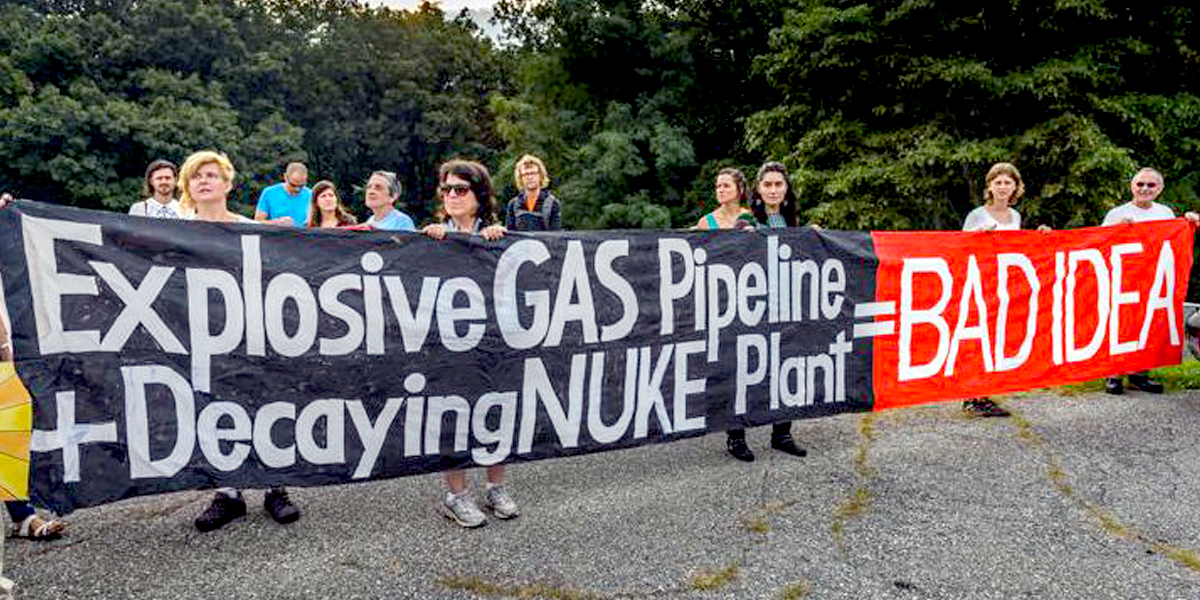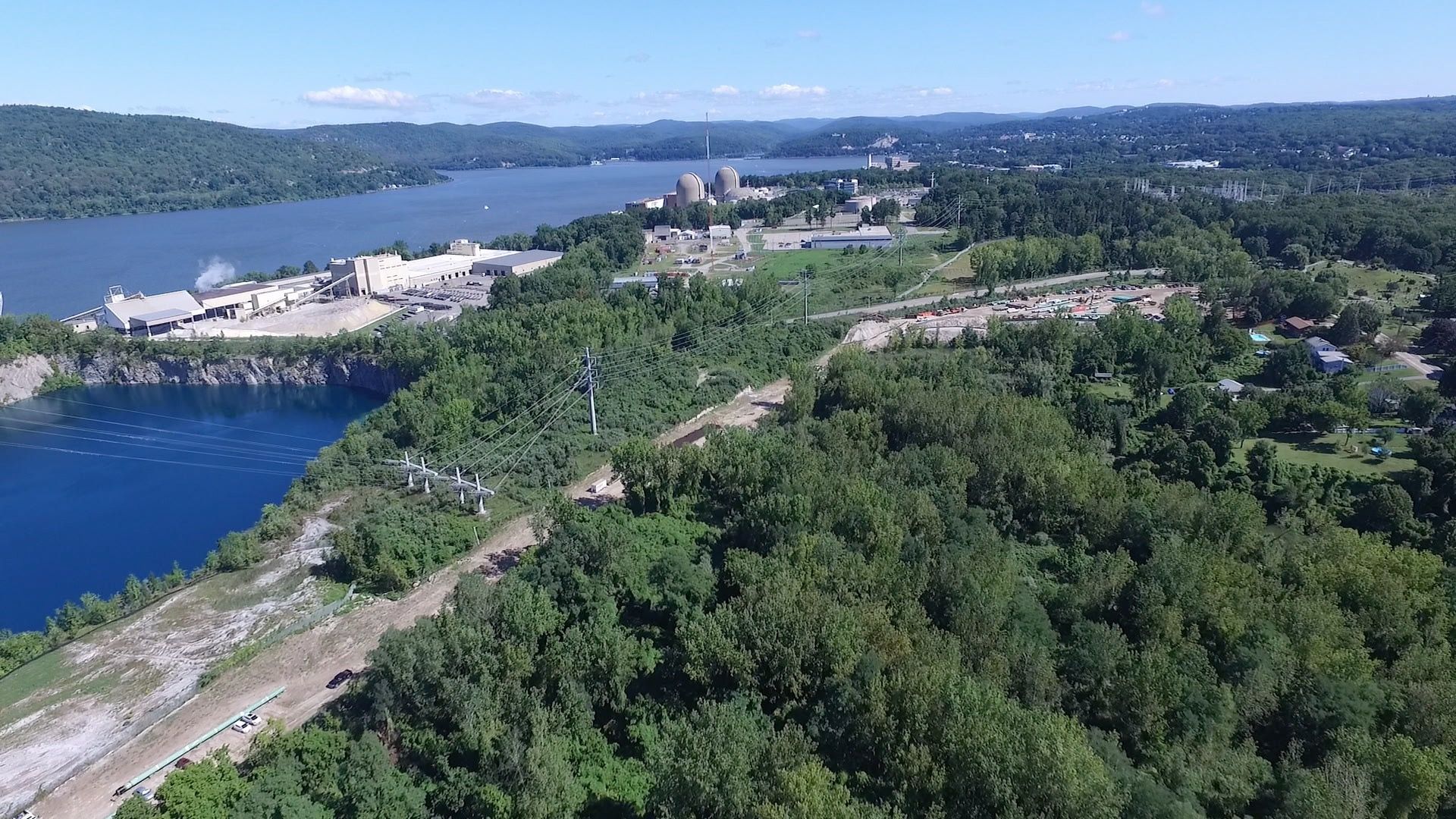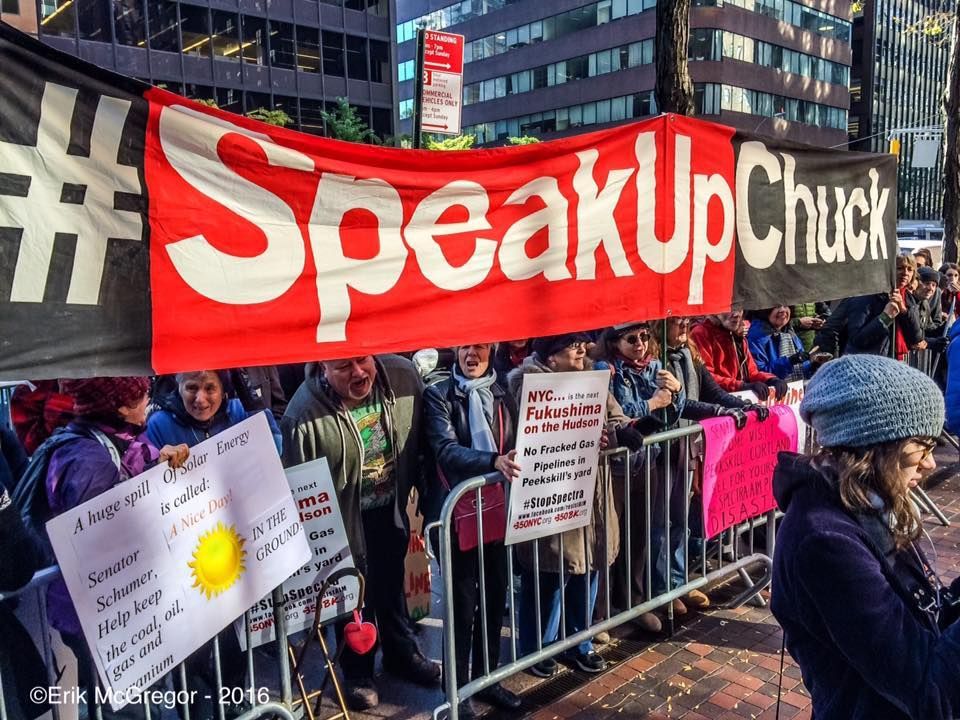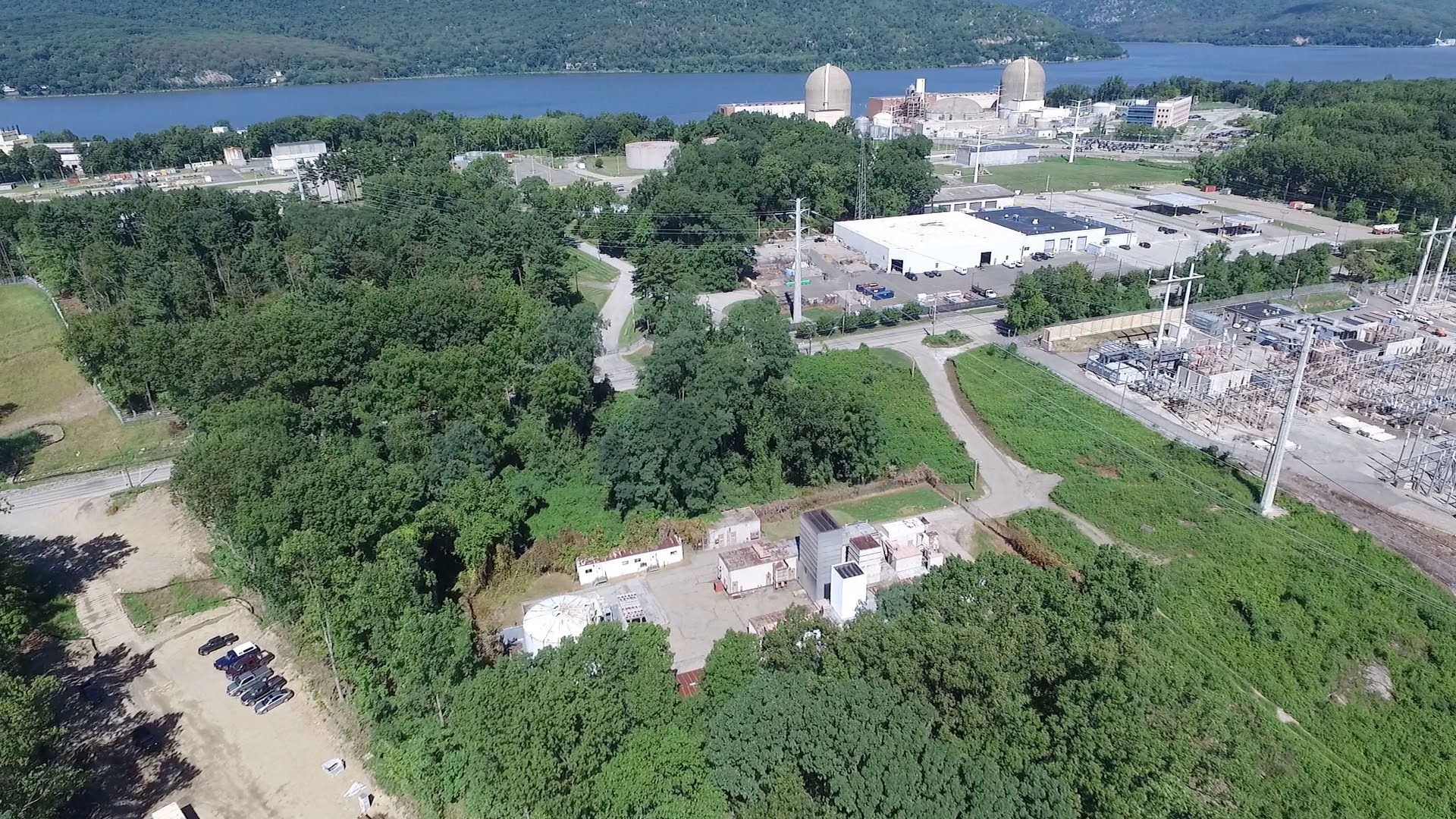

Fifteen people were arrested today at a rally this morning outside the Manhattan office of New York Sen. Charles Schumer, where they have maintained a presence for the past 60 days. With the Algonquin Incremental Market (AIM) expansion of the Spectra Energy pipeline in Westchester County, New York set to go online by Nov. 1, opponents are asking Schumer to intervene and use his influence to put a halt to the project. Schumer’s office did not respond to a request for comment by EcoWatch.
[facebook https://www.facebook.com/resistaim/videos/1476524125698000/ expand=1]
Members of Resist Spectra and their supporters showed up on Third Avenue, chanting “We will not let you build this pipeline.” Many sat along 780 Third Avenue, the building housing Schumer’s New York City office.
The AIM project is set to carry Marcellus Shale fracked gas to New England, passing through New York State and crossing the Hudson River at scenic Stony Point.

The pipeline runs close to the aging Indian Point nuclear power plant in Buchanan. The oldest of the three reactors on site began operations in 1962, but has since been shut down. The other two operating reactors date to 1974 and 1976.
One of the opponents’ main concerns is the proximity of the pipeline to the nuclear facility. The 42-inch pipeline passes within 105 feet of an electrical substation and 1,320 feet from the reactors. While it’s not California, Westchester County does have a history of earthquakes and the Ramapo Fault runs near the Indian Point nuclear plant. In 1783, a magnitude 5.0 quake struck the area, and in the early morning hours of Oct. 19, 1985, a 3.6-magnitude earthquake on the Ramapo Fault system caused the plant to declare “an unusual event” but no damage was reported. The probability of a 5.0 or greater earthquake in the county in the next 50 years is estimated at 3.36 percent.
That’s enough to rattle residents from Westchester to Brooklyn. Pipeline opponents point out that 20 million people live within a 50-mile radius of Indian Point. An elementary school sits just 400 feet from the pipeline.

The specter of another San Bruno, California-type event may be weighing on those who live in the zone. In 2011, a 30-inch natural gas pipeline exploded in this Bay Area town just south of San Francisco, sending flames 1,000 feet into the sky. It destroyed 38 homes and killed eight people. On April 29, a Spectra Energy 30-inch pipeline blew up in Westmoreland, Pennsylvania, severely burning one man and damaging two homes. Roads melted from the heat.
Data from the Pipeline and Hazardous Materials Safety Administration (PHMSA) shows that 12 significant incidents have occurred on gas transmission pipelines in New York State since 2000, resulting in at $4.4 million in total costs. Spectra Energy pipelines were involved in 38 incidents in the U.S. from 1986 to 2012, according to ProPublica. The PHMSA cited Spectra for at least four violations from 2013 to 2015.
Indian Point Fire Raises Huge Concerns Over Siting of Spectra #Pipeline http://t.co/ZL5XK1DRuh @gaslandmovie @350 pic.twitter.com/Ipa1xbpSZ0
— EcoWatch (@EcoWatch) May 19, 2015
Disaster experts, public officials and health care professionals got a first-hand look at the pipeline site on Oct. 18, hosted by Physicians for Social Responsibility. A statement released by the organization following the inspection tour read:
“Requests by safety experts and public officials for emergency protocols and safety preparedness indicate no evidence of planning for a pipeline rupture or explosion adjacent to the nuclear plant. The lack of emergency training and preparedness reflects the lack of recognition of the safety experts’ concerns regarding the perilous impact of a pipeline accident at that location and the imminent and permanent danger the AIM pipeline poses to the nuclear plant and the entire New York metropolitan area.”

In May, New York Senators Schumer and Kirsten Gillibrand urged the Federal Energy Regulatory Commission (FERC) to suspend action on the AIM project until independent health and safety reviews of the project are completed.
“I have serious concerns with the Algonquin gas pipeline project because it poses a threat to the quality of life, environmental, health and safety of residents across the Hudson Valley and New York State without any long-term benefit to the communities it would impact,” Schumer said in a statement in May. The two senators again wrote to FERC on Aug. 3 requesting that the agency suspend construction.
A Bloomberg BNA analysis released in February said that the industry dominates lobbying of the PHMSA. Major companies lobbying the agency include TransCanada Pipelines Ltd., Norfolk Southern Corp., Dow Chemical Co., American Airlines and Shell Oil Co. The American Petroleum Institute, Association of American Railroads, Renewable Fuels Association and the American Farm Bureau Federation are among the Industry trade associations engaged in lobbying the PHMSA.

“Despite repeated warnings from nuclear power and pipeline safety experts that a pipeline rupture at that sensitive location could result in a nuclear catastrophe worse than the Fukushima nuclear disaster, their insistence on a full, independent risk assessment was to no avail,” Ellen Weininger of Grassroots Environmental Education told EcoWatch.
Spectra may soon help create the largest energy infrastructure company in North America if a planned merger with Enbridge goes through. Enbridge is a minority owner of the controversial Dakota Access Pipeline.
“As a physician and a public health professional, I say, unequivocally, that risks of this pipeline, as will be explicitly described by my colleagues, far outweigh the possible benefits and pose an unacceptable level of vulnerability to the men, women and children of this entire region—and beyond,” wrote Dr. Irwin Redlener in a statement sent to EcoWatch. Dr. Redlener is director of the National Center for Disaster Preparedness and a professor at Columbia University.
A lawsuit challenging FERC’s approval of the project is currently pending in the U.S. Court of Appeals for the DC Circuit.
Correction: This article has been updated. A paragraph has been removed, which erroneously stated that NRG Energy was the same company as Natural Resource Group. We regret the error.

 233k
233k  41k
41k  Subscribe
Subscribe 